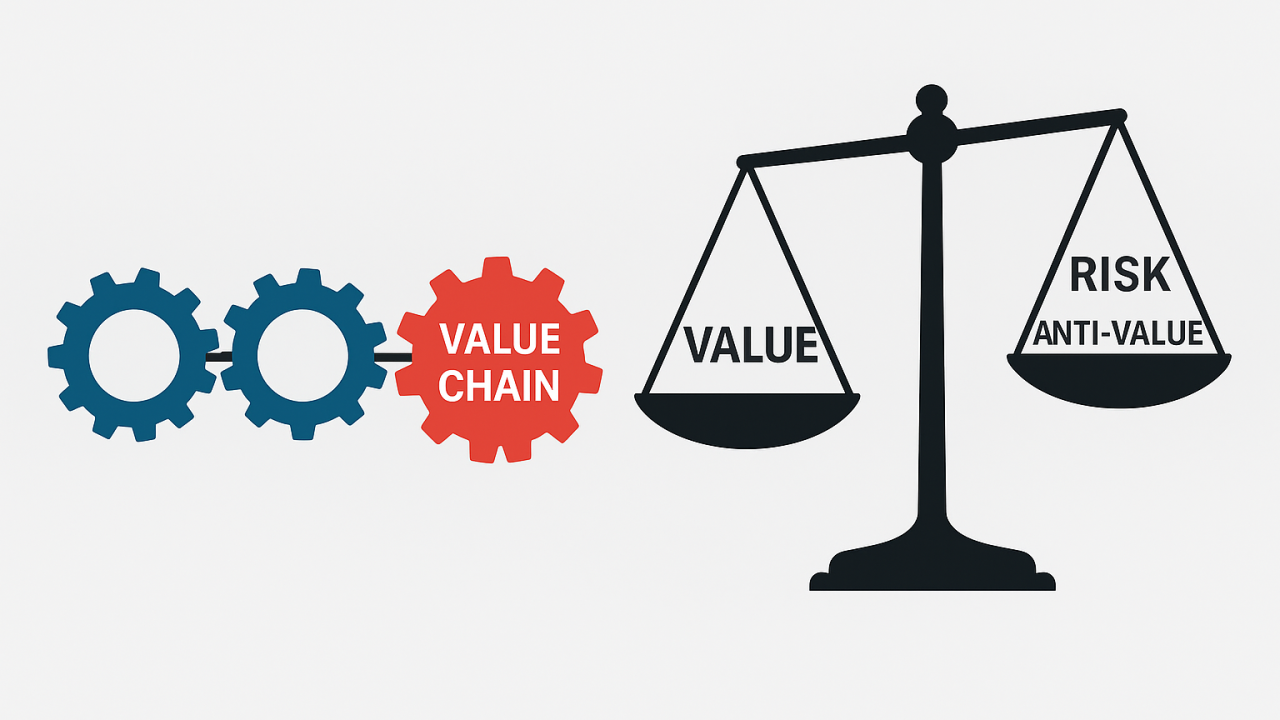Assessing the Value of Processes: Efficiency, Risks, and Anti-Value

Every business process exists to deliver value. But in practice, evaluating the value of a process isn’t about individual steps — it’s about the whole chain. You can’t “weigh” a single action in isolation — its value only becomes visible in the context of the entire delivery.
The Value Chain: One Whole
Each action in the value chain is just a link. Remove one — and the whole delivery collapses. We simply can’t assess steps properly without considering their role in the full process.
Take this example: authorization in a digital product. It doesn’t produce value by itself, but it’s present in every value stream. Without it, nothing works.
⚡️ Remove authorization — and everything stops. This shows why the efficiency of such nodes should be measured across all streams — not in isolation.
Efficiency and Risk: Two Sides of the Same Coin
Process efficiency = value delivered (minus anti-value) divided by resources consumed.
But that’s not enough. We also need to factor in sustainability:
- How reliably does the process continue delivering value?
- What’s the risk of degradation or failure — or growth?
Processes with high efficiency and low risk are the gold standard.
But even great processes can create anti-value when they change suddenly and become unpredictable to the consumer.
Anti-Value and Customer Trust
Any process change that:
- reduces predictability;
- introduces new risks;
- or breaks expectations
— can create anti-value: a drop in trust and satisfaction.
And this is crucial in the context of continuous improvement. We must minimize anti-value even when we’re working to improve process efficiency.
The Acceptable Window of Efficiency and Risk
Every consumer has their own threshold of what’s acceptable:
- How high is the perceived value?
- How well does the cost (resources, effort) match the result — i.e., consumed value?
- How reliable and predictable is the process?
Example from daily life: buying yogurt.
We intuitively assess its effectiveness: taste (delivered value), brand and expiry date (risk), price (consumed value). That’s real-time value-efficiency-risk assessment.
Shared Steps Across Streams
A single step may serve many streams — authorization, API gateway, etc.
You can’t judge it in a vacuum. Its efficiency only becomes clear when you look at the aggregate value across all the streams it supports.
Constantly Validate the Value
And most importantly: the end value of a process must be assessed by the one who consumes it.
And ideally, validated by someone else.
This should be done continuously — because everything changes over time.
Business processes must adapt to shifting expectations, without losing efficiency or introducing new risks.

